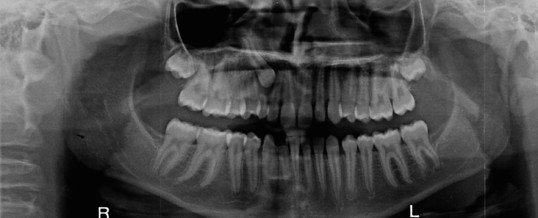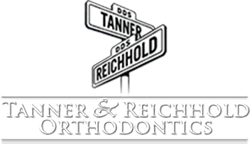
Exposure to x-rays has long been associated with the potential increased risk of non-cancerous tumors. A news story that was published in April of 2012 referenced this link and renewed the concern among the general population. Therefore, we feel that it’s important to review the use of x-rays for the purpose of patient care in our orthodontic office. The following questions and answers are intended to provide you with information that you can use to make wise decisions about your dental health, and to assure you that we here at Tanner and Reichhold Orthodontics care about your safety.
What is the difference between x-rays using film and digital x-rays?
Originally, all x-rays used film to produce the images. Like the film you use in a camera, it had to be treated properly and images had to be developed in a darkroom or a large darkbox. As technology developed, digital x-rays were introduced, using digital sensors rather than film, to produce images that are available immediately and need no development. Digital x-rays have some clear advantages over the old-fashioned use of film. For example:
- Digital x-rays expose patients to far less radiation than film x-rays, so they pose less of a health risk.
- The images produced by film x-ray are often less clear than digital, and this sometimes results in the need to retake some x-rays, meaning more radiation.
- Digital images can easily be edited, enhanced, and quickly viewed so that patients can be treated more efficiently.
- Film x-rays require the use of hazardous chemicals for development, resulting in dangerous environmental waste.
As you can see, not only are there significant differences between film and digital x-rays, but those differences really do make a difference. We are committed to minimizing radiation exposure for our patients and to providing our patients with the best technology, which is why we now offer digital x-rays exclusively in our office!
How do we approach the use of dental x-rays with due caution in caring for patients?
We always balance the need for x-rays with patient safety needs, with the ultimate goal being better dental health for the patient. We carefully consider patient safety together with patient benefit, as with any technology for patient care.
If x-rays come with risks, why have dental x-rays taken at all?
When we take an x-ray, it’s because there’s a health benefit we can’t provide without it. Dental x-rays enable us to diagnose orthodontic problems and potential other dental health issues that need attention. Left unattended, these dental health issues could cause bigger health problems that far outweigh potential exposure to the relatively low amount of radiation from our digital x-ray technology.
What safety precautions do we take for dental x-rays?
- We now exclusively use digital x-ray technology in all of our cases, which as we have outlined is better and safer than high-speed film.
- We follow the American Dental Association (ADA) guidelines for x-rays.
- We make every effort to utilize existing x-rays when they’re current and accurate. For instance, since we have the ability to easily share digital files with virtually all of our referring general dental offices and other dental specialists such as oral surgeons, we can frequently use an x-ray that’s been taken for another purpose and avoid the patient having to have another x-ray taken. This is one of the conveniences and efficiencies of working with other state-of-the-art dental practices
What should my response be as a patient concerned about my dental health?
First, know that as your orthodontic provider, we share your concern for your dental and overall health. Please feel free to talk to us about any concerns that you may have and to get the information you need to weigh the need for an x-ray with any potential risks. Remember, our use of dental x-rays is to provide you with dental health benefits that you could not get otherwise, in the form of accurate and timely diagnosis of orthodontic problems and other dental health issues that need attention. Lastly, if you have further questions about general information about dental x-rays, we encourage you to visit ADA.org.
By Dr. Gary Reichhold
JUN

About the Author:
Dr. Gary Reichhold and his partner Dr. Stephen Tanner have been proudly serving families in Concord, Walnut Creek, Clayton, Pleasant Hill and the surrounding communities for over 20 years. Their office is conveniently located in central Contra Costa County and their experienced team is committed to providing you and your family with exceptional orthodontic care.